Config 2024: An infinite canvas (impressions)
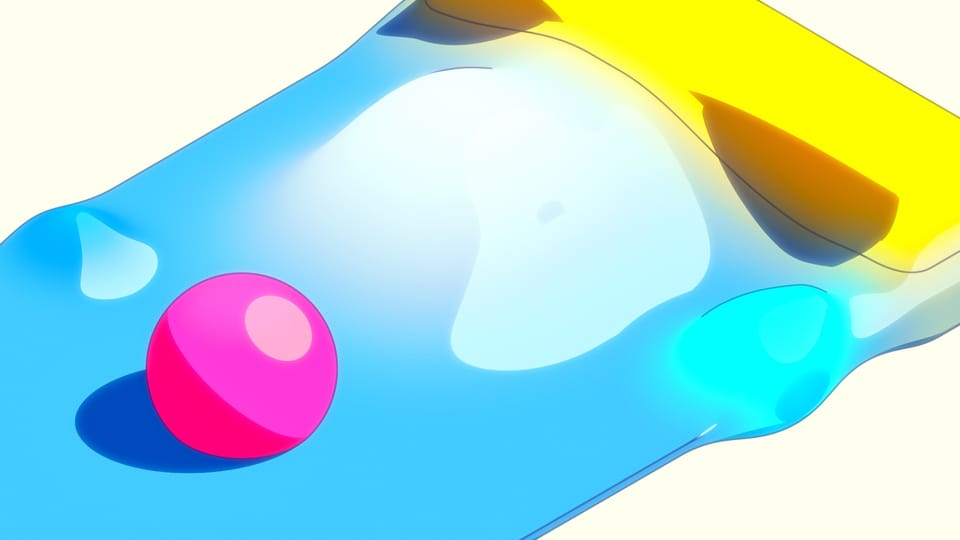
Linda Dong and Mike Stern of Apple's Design Evangelism team gave a talk at Config 2024. The presentation's premise was already intriguing: how spatial computing unlocks new ways to experience and interact with user interfaces. The presentation video took some days after the event to be published, which I eagerly (and now I know, with a reason) anticipated. Here's the talk.
It is evidently not a WWDC session with significantly looser rules. Yet it is always extremely interesting to consume anything created by the same team that makes the HIG, and this time was no exception. Very quickly, the presentation that appeared casual on the surface transitioned to a wave-shaped dynamic, from explaining to potential newcomers the initial proposition of spatial computing to the extremely interesting and often discussed theoretical points of the evolution of interface design, but from a fresh point of view.
Establishing common ground on how skeuomorphism makes virtual objects approachable, it proposed a reasonable reflexion of how users evolve, potentially justifying a shift from realistic to more abstract designs as users became more comfortable with computers, and then went one step further, embracing the claim that modern interfaces should blend realism and abstraction (for example, haptic feedback, Siri, and animations).
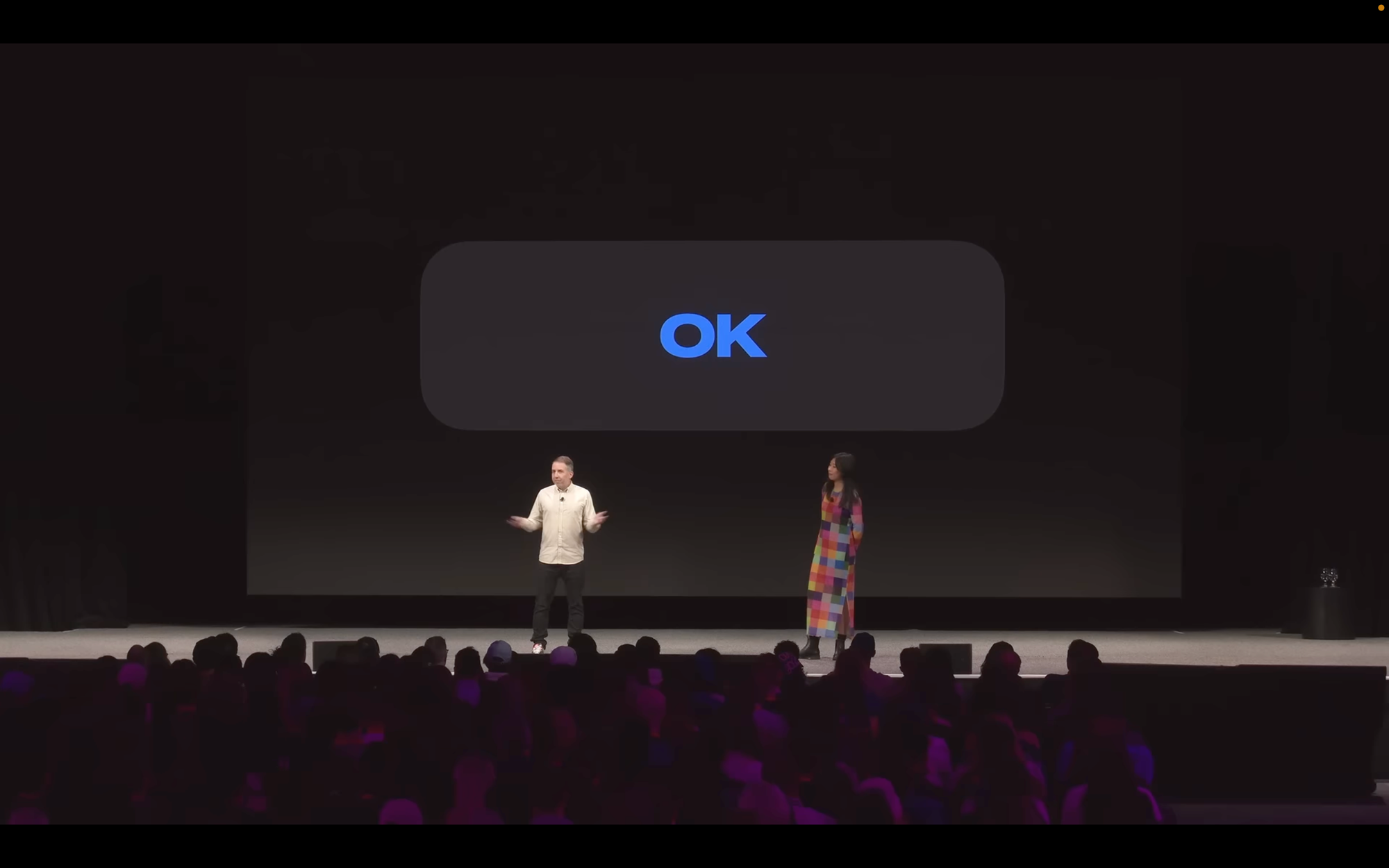
It turned out to be a turning point for me here, and the necessity of having this distinct mindset when dealing with paradigm shifts like the one we are experiencing with visionOS reinforced it. From how interfaces need to coexist with the user's surroundings to what it truly means to create immersive experiences, the ability to transition from realistic life-scale affordances to abstract components lays the groundwork for a much richer interface in which familiarity can be hinted and then enhanced by abstract, non-intrusive, practical components.
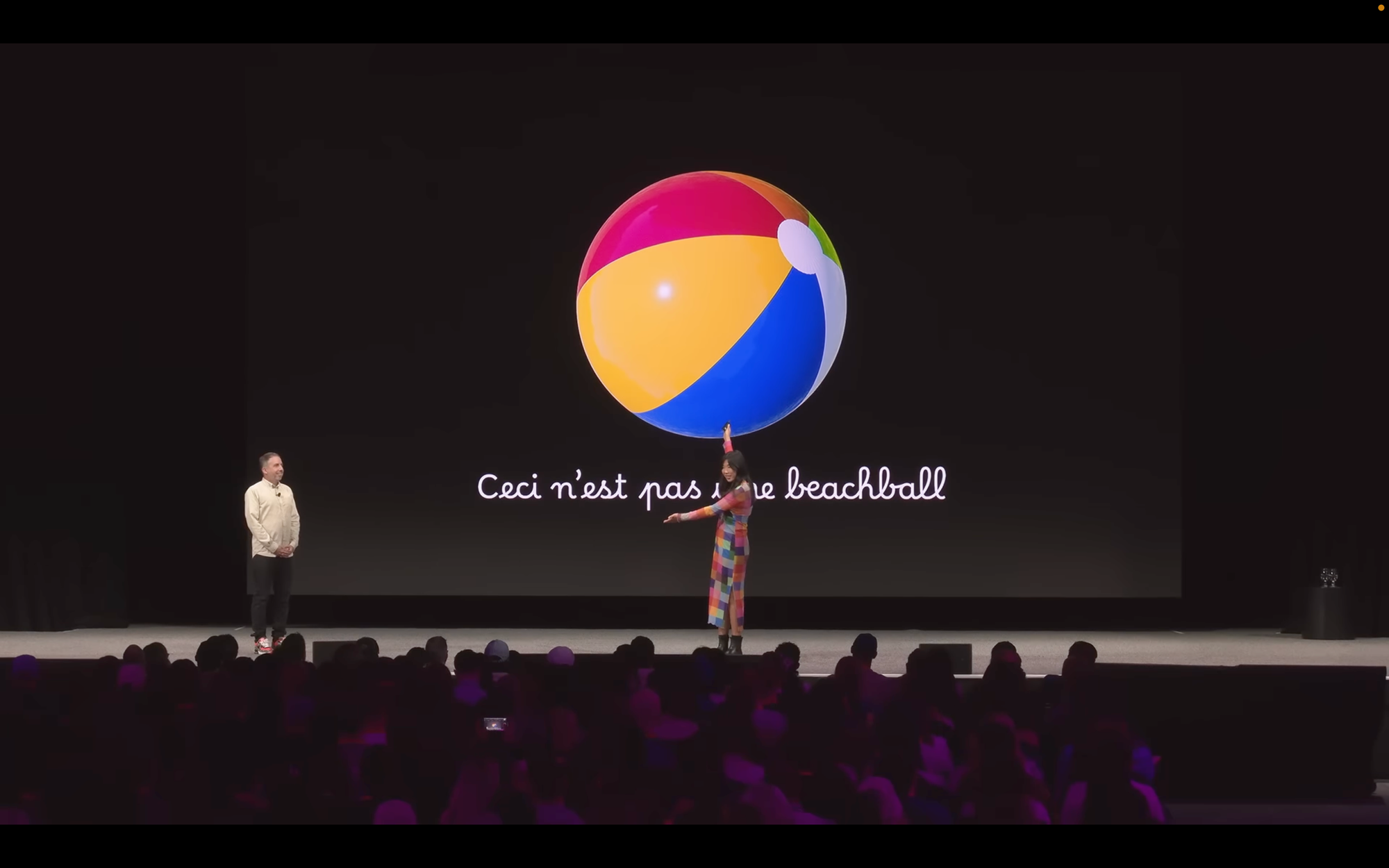
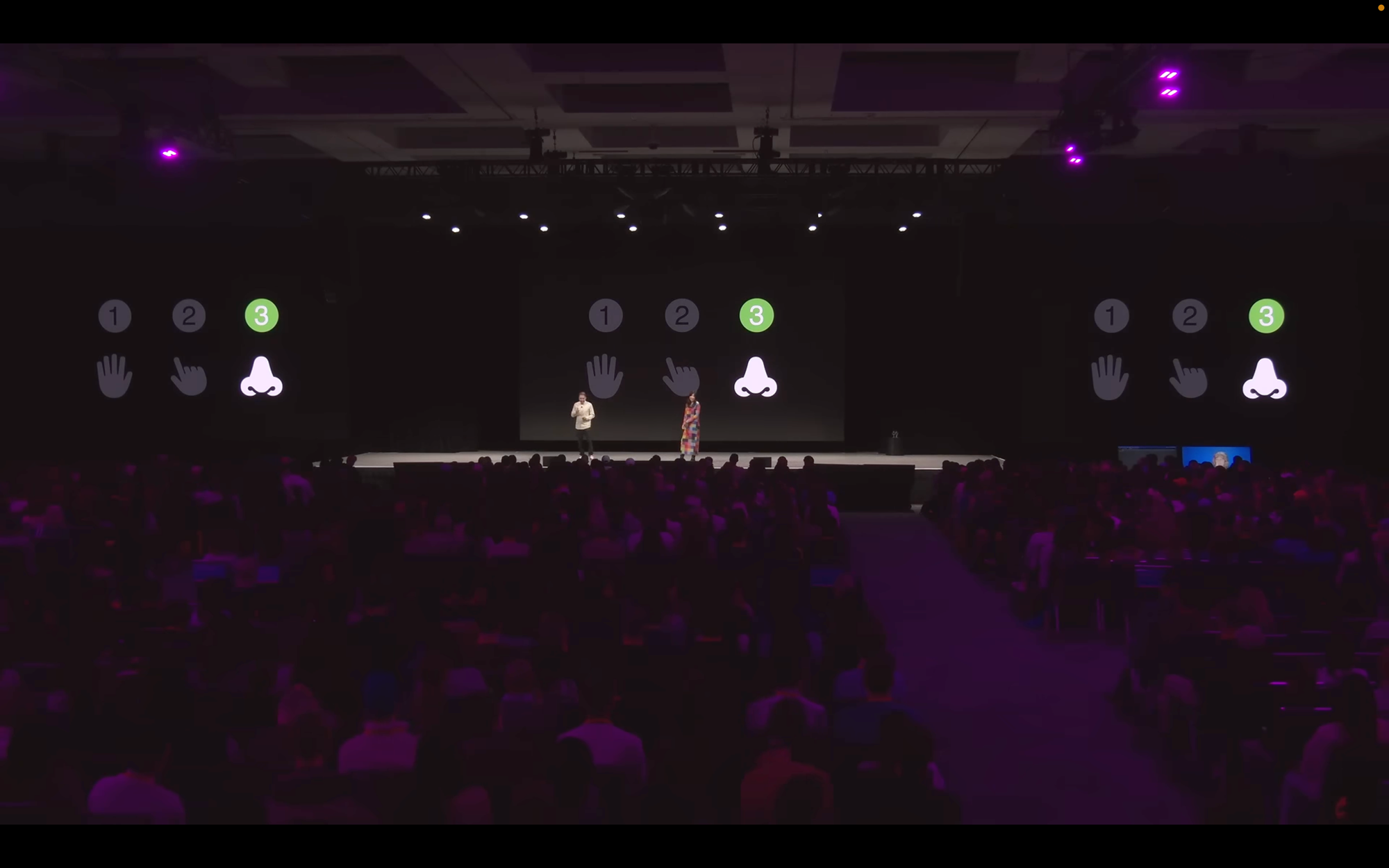
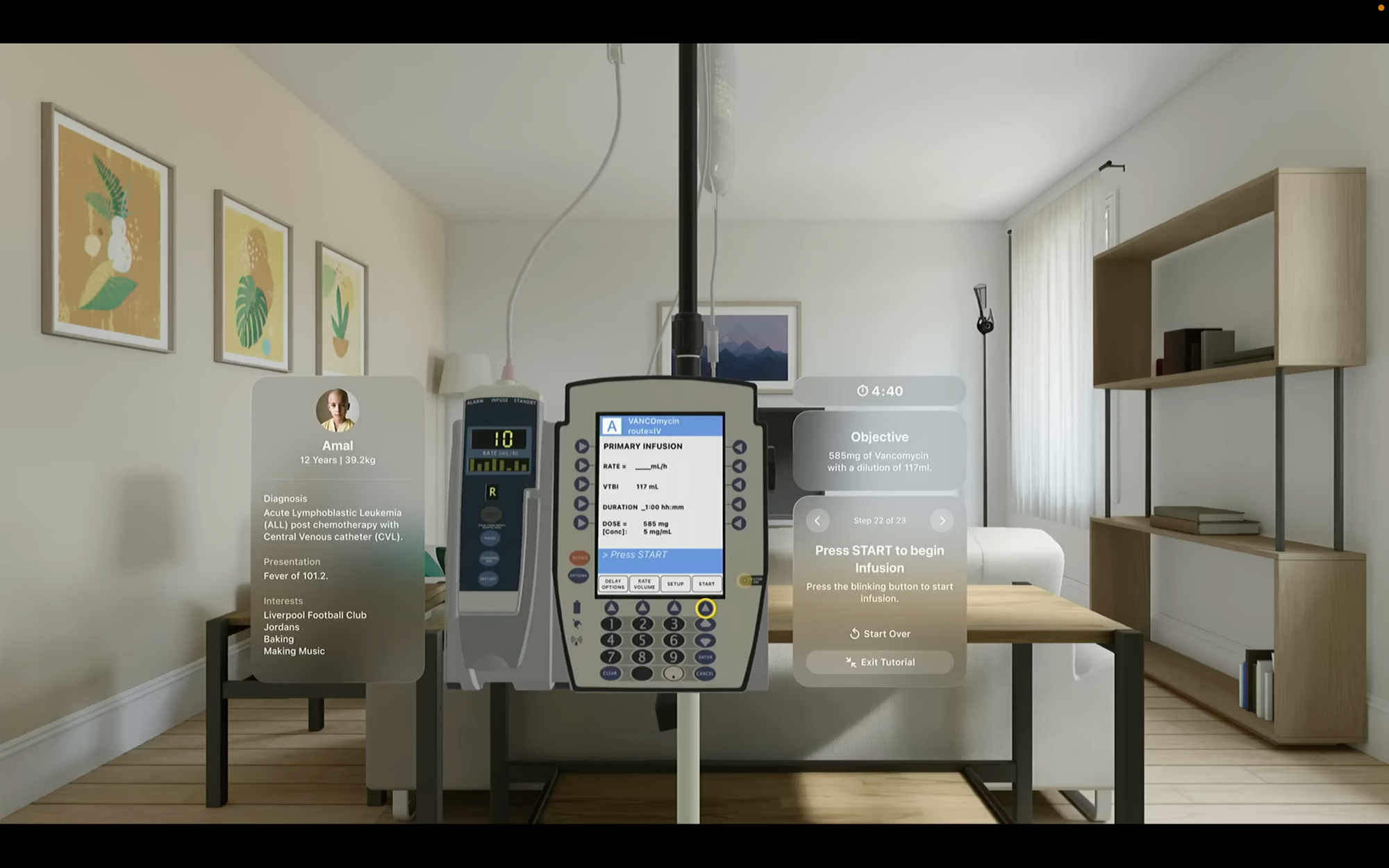
Frames of the talk highlighting some of the many essential concepts. From the debate of the representation of the beach ball, to the audience exercise of interaction, passing by demos of medical training apps for family members
If the presentation had ended at this point, it would have already been amazing, but it went on to explain direct and indirect interaction in an original and simple way (you can't reach the projection from your seat), why this has profound consequences for inclusivity, and how natural interaction transcends visuals.
Really interesting and full of tips in a surprisingly light talk. kudos 🙌
So the final takeaway I'll keep in mind is that when confronted with new interface challenges, consider the convenience or possibility of interaction, reevaluate preconceptions about affordances and accessibility, embrace user evolution, and allow for a mix of paradigms that can adapt to the task at hand (even in realtime).
Bonus
Key Aspects of Spatial Design
Depth and Scale
- Depth encourages interaction and directs focus.
- Scale allows for life-size interfaces and impactful moments.
Natural Input
- Direct input: Interacting with objects directly (e.g., medical training, gameplay).
- Indirect input: Small hand movements for big actions (e.g., swiping, tapping).
- Importance of feedback cues for natural input.
Immersion
- Transforming environments to focus and engage users.
- Immersion as a spectrum, from simple dimming to full environmental changes.
- Choreographing sensory elements for authentic experiences.
